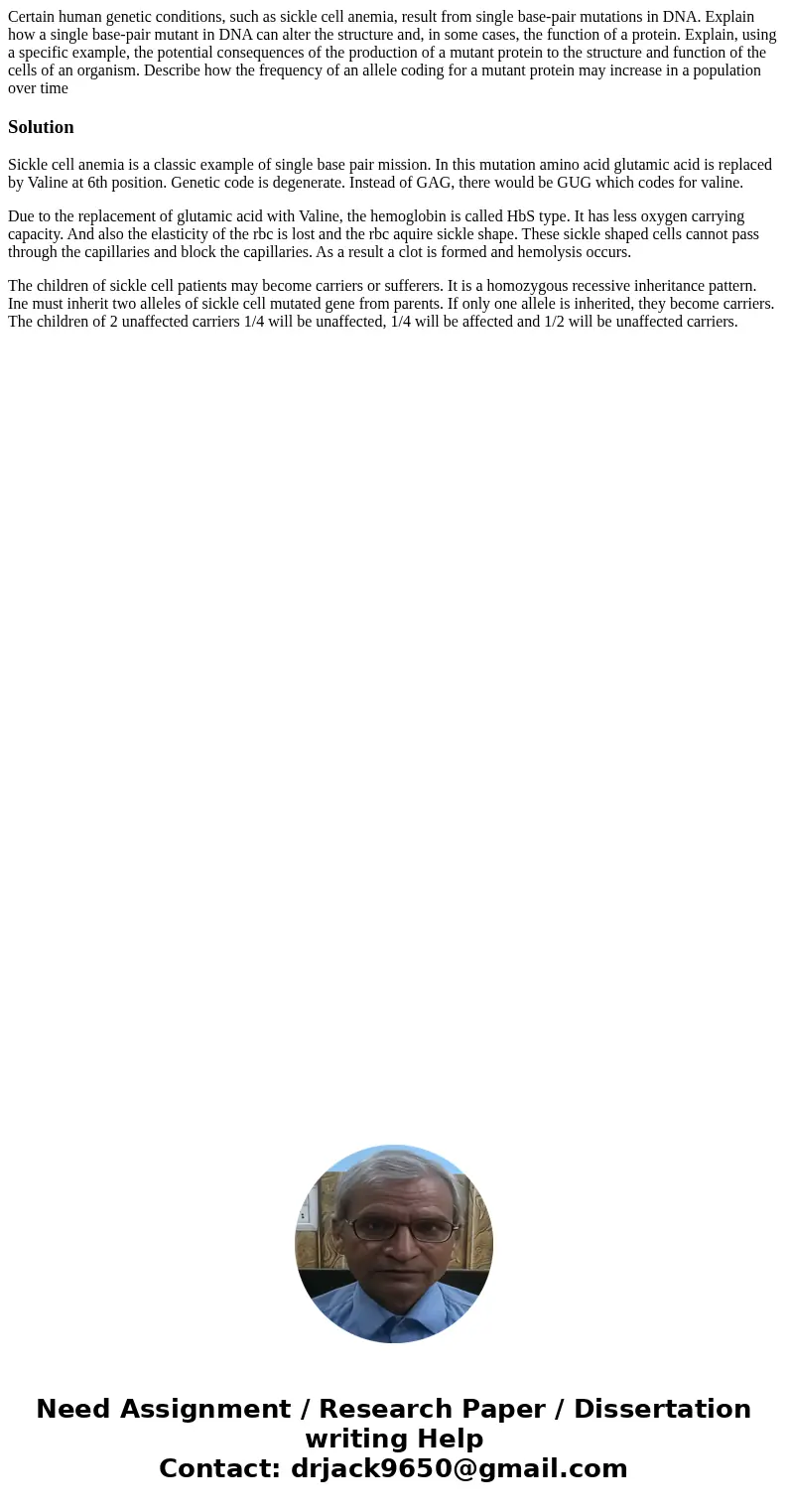Certain human genetic conditions such as sickle cell anemia
Solution
Sickle cell anemia is a classic example of single base pair mission. In this mutation amino acid glutamic acid is replaced by Valine at 6th position. Genetic code is degenerate. Instead of GAG, there would be GUG which codes for valine.
Due to the replacement of glutamic acid with Valine, the hemoglobin is called HbS type. It has less oxygen carrying capacity. And also the elasticity of the rbc is lost and the rbc aquire sickle shape. These sickle shaped cells cannot pass through the capillaries and block the capillaries. As a result a clot is formed and hemolysis occurs.
The children of sickle cell patients may become carriers or sufferers. It is a homozygous recessive inheritance pattern. Ine must inherit two alleles of sickle cell mutated gene from parents. If only one allele is inherited, they become carriers. The children of 2 unaffected carriers 1/4 will be unaffected, 1/4 will be affected and 1/2 will be unaffected carriers.

 Homework Sourse
Homework Sourse